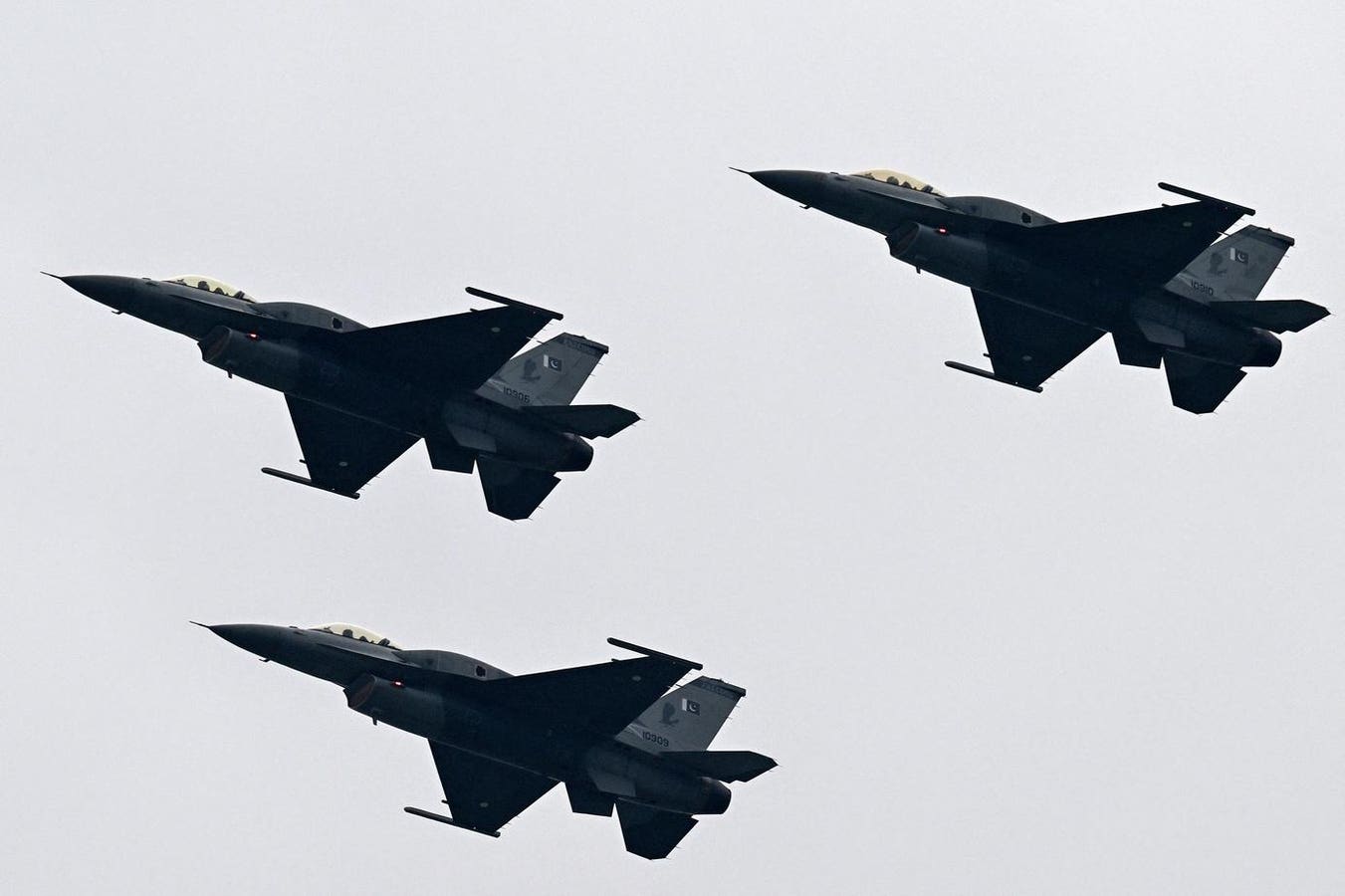Neighboring rivals India and Pakistan are helping two other rival countries in the South Caucasus region build up their modest air forces with fighter jet exports and upgrades.
Beaming and giving a thumbs up from the cockpit of a newly-delivered JF-17C Block III at Heydar Aliyev International Airport in Baku on September 25, Azerbaijani President Ilham Aliyev conclusively confirmed years of rumors that his country would acquire that combat aircraft from Pakistan. The following day, the Pakistani military announced the signing of a contract to sell the single-engine, multirole fighter jets to Azerbaijan but did not reveal the cost or how many fighters the contract covers.
Unconfirmed reports in Azerbaijani and Pakistani media in February claimed Azerbaijan had reached a $1.6 billion deal for the JF-17s but again did not disclose the number of jets.
Either way, induction of these modern fighters with their active electronically scanned array, AESA, radars marks a boost for Azerbaijan’s modest air force, which hitherto consisted of a mere dozen MiG-29s and less than 40 subsonic Su-25 Frogfoot attack planes.
The news came less than a week after Indian media confirmed that Armenia is seeking New Delhi’s help to upgrade its tiny fleet of just four Russian Su-30SM jets, the only fighters Yerevan has. India, which manufactures the Su-30MKI variant under license, is ideally suited for helping Armenia upgrade its four Flankers for reasons previously outlined in this space.
According to the Indian media reports, Armenia seeks the Uttam AESA radar, new avionics, and weapons. India produces the indigenous beyond visual range Astra air-to-air missile, which is compatible with the Su-30, and may well sell them to Armenia. Such upgrades could help Armenia’s twin-engine, sleek, and supermaneuverable Flankers maintain their technological edge against Azerbaijan’s shiny new JF-17s.
Armenia has already bought advanced weaponry from India, notably the Akash medium-range air defense system, and is reportedly considering other systems. In recent years, it has sought to diversify its military procurement sources to lessen its overwhelming reliance on Russian hardware. As part of this process, it also acquired Mistral short-range air defense missiles from France and Caesar howitzers.
More broadly, Armenia’s air defenses are undergoing a transitional phase. Iran International reported in July that Armenia had secretly reached a $500 million deal with Iran for the supply of indigenous long-range air defenses. On top of that, the Kyiv Post recently reported that Armenia signed a $232 million contract with the European Commission in late August to transfer Soviet-era munitions and equipment, including its strategic, long-range S-300 air defense missile systems, to Ukraine.
Both of those reports should, of course, be taken with a gigantic grain of salt. However, one thing is certain: the Armenian armed forces are doubtlessly undergoing a substantial and rapid transformation.
India can doubtlessly help Armenia get the best out of its Su-30s, which arrived in 2019 but were never used in the 2020 Nagorno-Karabakh conflict with Azerbaijan or during subsequent clashes. New Delhi may even be in a position to offer Armenia additional Su-30s.
The Diplomat recently reported that Indian-built Su-30s could be a game-changer in the international arms export market. The country recently entered talks with Russia on the potential joint production of Flankers in India for export. The Russian airframe, which is renowned for its maneuverability, coupled with Indian-made systems and weapons, would offer potential buyers a very unique combat aircraft.
“With a long list of potential clients for a jointly produced Su-30 fighter, the implications of such an agreement for both countries remain highly significant,” read the report.
And while that article didn’t mention Armenia, it wouldn’t be surprising if India offered additional Su-30s. For Yerevan, it could acquire a fighter type with which it is already broadly familiar outfitted with Indian components, advanced radar, and weapons.
Indian Flankers would likely be a cheaper option for Armenia than any Western fighters that might become available, like France’s widely exported Dassault Rafale. It would also enable Yerevan to avoid potentially incurring American sanctions under the Countering America’s Adversaries Through Sanctions Act for buying advanced Russian hardware from Russia.
Yerevan ordered a dozen Su-30s but only received four. It’s unlikely Russia—embroiled as it is in Ukraine and the fact it is on bad terms with the incumbent Armenian government—will ever deliver the remaining eight or if Armenia even wants them from Moscow at this stage. Acquiring Su-30s from India instead would be much more politically tenable for Yerevan for a number of reasons.
India would also have a geo-strategic self-interest in preventing Azerbaijan from building a preeminent and unmatched fighter fleet in the South Caucasus with Pakistan’s help.
Read the full article here





